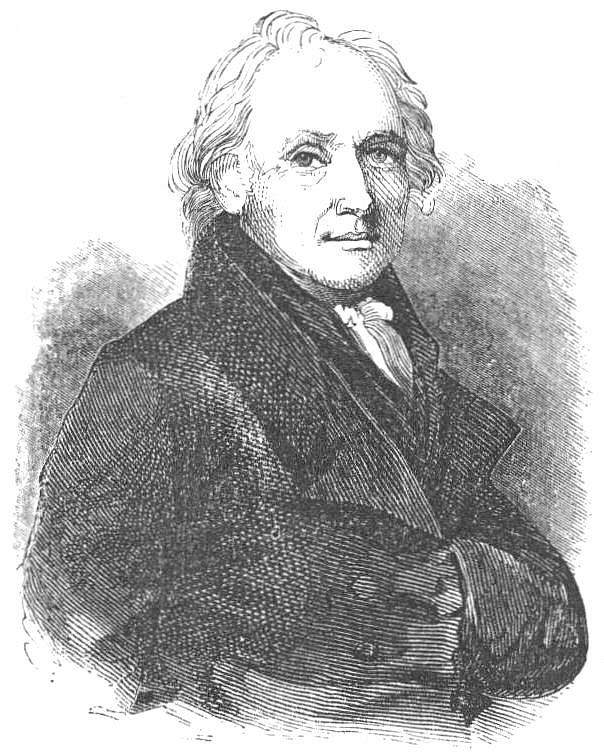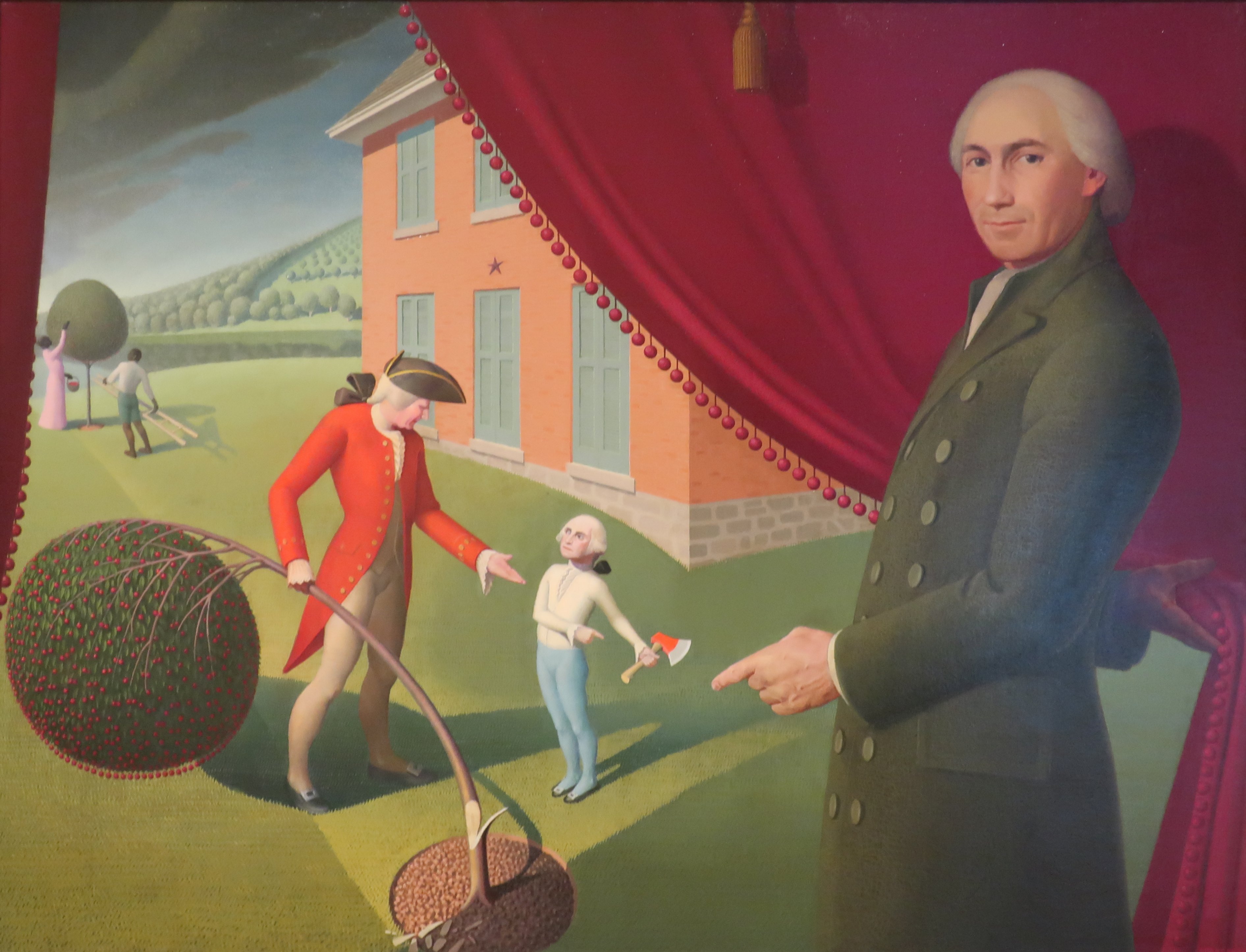Weems–Botts Museum on:
[Wikipedia]
[Google]
[Amazon]
Weems–Botts House Museum is a small historic museum in
 The house originally served as the
The house originally served as the  The house was purchased by Parson Weems, a native Marylander, in 1798. Weems was a clergyman who became an author and purveyor of books, which he would sell from the back of his jersey wagon. While traveling through Dumfries during one of his book-selling tours, Weems met Fanny Ewell, the daughter of Colonel Jesse Ewell, a wealthy tobacco planter with a warehouse business in Dumfries. They married in 1795.
During his ownership of the house, Weems wrote an 80-page booklet that would influence the thoughts of Americans to this day entitled ''A History of the Life and Death, Virtues and Exploits of General George Washington.'' Weems published the first biography on
The house was purchased by Parson Weems, a native Marylander, in 1798. Weems was a clergyman who became an author and purveyor of books, which he would sell from the back of his jersey wagon. While traveling through Dumfries during one of his book-selling tours, Weems met Fanny Ewell, the daughter of Colonel Jesse Ewell, a wealthy tobacco planter with a warehouse business in Dumfries. They married in 1795.
During his ownership of the house, Weems wrote an 80-page booklet that would influence the thoughts of Americans to this day entitled ''A History of the Life and Death, Virtues and Exploits of General George Washington.'' Weems published the first biography on
Historic Dumfries: Weems-Botts Museum
{{DEFAULTSORT:Weems-Botts Museum Biographical museums in Virginia Houses in Prince William County, Virginia Houses on the National Register of Historic Places in Virginia History museums in Virginia Museums in Prince William County, Virginia National Register of Historic Places in Prince William County, Virginia
Dumfries, Virginia
Dumfries, officially the Town of Dumfries, is a town in Prince William County, Virginia. The population was 4,961 at the 2010 United States Census.
Geography
Dumfries is located at (38.567853, −77.324591).
According to the United States ...
, United States. The museum includes the landmark Weems–Botts House on the corner of Duke Street and Cameron Street and the Weems–Botts Museum Annex, which houses the Lee Lansing Research Library and Archive, located at 3944 Cameron Street. Both buildings are located in Merchant Park. The park's bandstand commemorates William Grayson
William Grayson (1742 – March 12, 1790) was a planter, lawyer and statesman from Virginia. After leading a Virginia regiment in the Continental Army, Grayson served in the Virginia House of Delegates before becoming one of the first two U ...
, one of Prince William County's most respected citizens and one of Virginia's first senators. The museum tour showcases the history of Dumfries, Virginia
Virginia, officially the Commonwealth of Virginia, is a state in the Mid-Atlantic and Southeastern regions of the United States, between the Atlantic Coast and the Appalachian Mountains. The geography and climate of the Commonwealth ar ...
's oldest chartered town, and people associated with the house, including Mason Locke "Parson" Weems, and attorney Benjamin Botts.
The museum was restored in 1975 as part of a bicentennial U.S. restoration project. The museum is owned by the Town of Dumfries and operated by Historic Dumfries Virginia, Inc., a non-profit organization.
Historical significance
 The house originally served as the
The house originally served as the vestry
A vestry was a committee for the local secular and ecclesiastical government for a parish in England, Wales and some English colonies which originally met in the vestry or sacristy of the parish church, and consequently became known colloquiall ...
for the Quantico Church. The house was purchased by Parson Weems, a native Marylander, in 1798. Weems was a clergyman who became an author and purveyor of books, which he would sell from the back of his jersey wagon. While traveling through Dumfries during one of his book-selling tours, Weems met Fanny Ewell, the daughter of Colonel Jesse Ewell, a wealthy tobacco planter with a warehouse business in Dumfries. They married in 1795.
During his ownership of the house, Weems wrote an 80-page booklet that would influence the thoughts of Americans to this day entitled ''A History of the Life and Death, Virtues and Exploits of General George Washington.'' Weems published the first biography on
The house was purchased by Parson Weems, a native Marylander, in 1798. Weems was a clergyman who became an author and purveyor of books, which he would sell from the back of his jersey wagon. While traveling through Dumfries during one of his book-selling tours, Weems met Fanny Ewell, the daughter of Colonel Jesse Ewell, a wealthy tobacco planter with a warehouse business in Dumfries. They married in 1795.
During his ownership of the house, Weems wrote an 80-page booklet that would influence the thoughts of Americans to this day entitled ''A History of the Life and Death, Virtues and Exploits of General George Washington.'' Weems published the first biography on George Washington
George Washington (February 22, 1732, 1799) was an American military officer, statesman, and Founding Father who served as the first president of the United States from 1789 to 1797. Appointed by the Continental Congress as commander of ...
and was the creator of the famous cherry tree story ("I cannot tell a lie, I did it with my little hatchet"). Weems also created the fable that Washington threw a silver dollar more than 300 feet across the Rappahannock River
The Rappahannock River is a river in eastern Virginia, in the United States, approximately in length.U.S. Geological Survey. National Hydrography Dataset high-resolution flowline dataThe National Map accessed April 1, 2011 It traverses the entir ...
. He also wrote biographies on Benjamin Franklin
Benjamin Franklin ( April 17, 1790) was an American polymath who was active as a writer, scientist, inventor, statesman, diplomat, printer, publisher, and political philosopher. Encyclopædia Britannica, Wood, 2021 Among the leading inte ...
, Francis Marion, and William Penn
William Penn ( – ) was an English writer and religious thinker belonging to the Religious Society of Friends (Quakers), and founder of the Province of Pennsylvania, a North American colony of England. He was an early advocate of democracy a ...
.Taylor, L.B. Jr. The Ghosts of Virginia, Volume VII.Progress Printing, Co, Inc., USA. 2002. Sometime after the death of his father-in-law in 1805, Weems moved his family into the Ewell family estate, Bel Air.
Weems sold his shop in 1802 to an attorney named Benjamin Botts. Benjamin Botts used the building as his law office. Best remembered as one of the defense attorneys who successfully defended Aaron Burr during his infamous treason and conspiracy trial, Botts was a Dumfries native and rising star in Virginia's legal community. Botts was killed in the Richmond Theater fire on December 26, 1811.
After passing through multiple ownerships, the Merchant family owned and lived in the house from 1869 to 1968. The property was restored and opened as a museum in 1975.
References
External links
Historic Dumfries: Weems-Botts Museum
{{DEFAULTSORT:Weems-Botts Museum Biographical museums in Virginia Houses in Prince William County, Virginia Houses on the National Register of Historic Places in Virginia History museums in Virginia Museums in Prince William County, Virginia National Register of Historic Places in Prince William County, Virginia